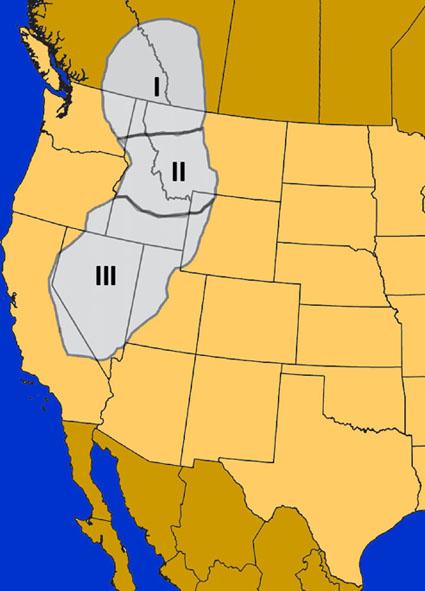PROVIDENCE, R.I. [Brown University] — Paleontologists have documented how dramatic shifts in climate have led to dramatic shifts in evolution. One such event, the Grande Coupure, was a wipeout of many European mammal species 33.9 million years ago when global temperatures and precipitation declined sharply. What has been puzzling is that during the same transition between the Eocene and Oligocene periods, North American mammals fared much better. A new study explains why: The rise of the Rocky Mountains, already underway for millions of years, had predisposed populations to adapt to a cold, dry world.

The rise of the Rockies extended from British Columbia to Nevada in three phases between 56 and 23 million years ago.
“Regional tectonically driven surface uplift resulted in large-scale reorganization of precipitation patterns, and our data show that the mammalian faunas adapted to these changes,” write the study authors, including Christine Janis, professor of ecology and evolutionary biology at Brown University, in the Proceedings of the Royal Society B. “We suggest that the late Eocene mammalian faunas of North America were already ‘pre-adapted’ to the colder and drier global conditions that followed the EO climatic cooling.”
The data in the study led by Jussi Eronen of the Senckenberg Research Institutes in Germany and the University of Helsinki in Finland, come from the authors’ analysis of the fossil record of the two continents, combined with previous oxygen isotope data that reveal precipitation patterns, and tectonic models that show the growth of the Rocky Mountains. Specifically, the study shows that the rise of the range spread south in three phases from Canada starting more than 50 million years ago, down through Idaho, and finally into Nevada by 23 million years ago.
In the meantime, fossil mammal data show, precipitation in the interior regions dropped, and major shifts in mammal populations, such as an almost complete loss of primates, took place. Estimated rainfall based on plant fossils in Wyoming, for example, dropped from about 1,200 millimeters a year 56 million years ago to only 750 millimeters a year about 49 million years ago.

Why did so many mammals survive in North America when so many went extinct in Europe? Adaptive change, driven by the Rocky Mountains.
But across the region these correlated shifts occurred over tens of millions of years, leaving a well-adapted mix of mammals behind by the time of the Grand Coupure 34 million years ago.
In Europe, meanwhile, tectonic developments weren’t a major factor driving local climate. When the global climate change happened, that continent’s mammals were evolutionary sitting ducks. Other studies have already suggested that Europe’s mammals were largely overrun and outcompeted by Asian mammals that were already living in colder and drier conditions.
Eronen said the findings should elevate the importance of collaboration across disciplines, for instance by integrating geoscience with paleontology, in the analysis of broad evolutionary patterns.
“Our results highlight the importance of regional tectonic and surface uplift processes on the evolution of mammalian faunas,” they wrote.
In addition to Eronen and Janis, the paper’s other authors are C. Page Chamberlain of Stanford University and Andreas Mulch of the Senckenberg Institutes and Goethe University in Germany.

